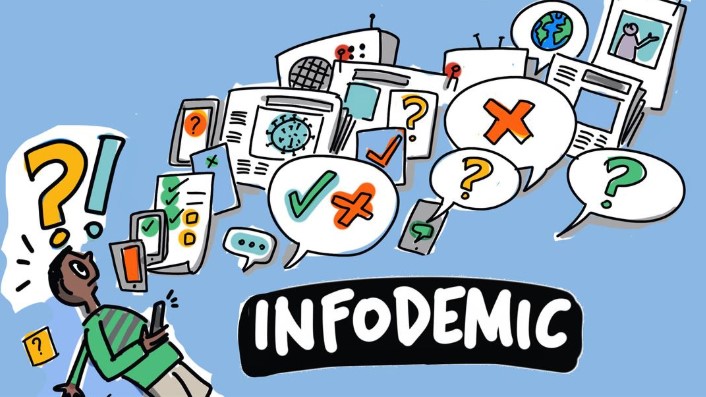
6 July 2020 – Many of us have not heard the word infodemic before. It refers to the avalanche of information that accompanies an epidemic to the extent that it becomes difficult to distinguish fact from fiction or identify information that is misleading.
More than 361 million videos related to COVID-19 have been uploaded to YouTube since the pandemic was first declared and many more posts have been shared online. Fighting the COVID-19 pandemic is a double battle with medical teams struggling to contain the spread of COVID-19 and work around the clock to develop a vaccine, while on the other hand, experts are working relentlessly to debunk fake news, verify information and refute misleading data.
Misleading information can be harmful to people’s health and that of the community and can lead to mistrust and anxiety. That’s why infodemic management is a critical part of any response to an epidemic.
Having the right information at the right time from trusted sources is key
During an emergency, an infodemic can drown out reliable information thus impeding an effective public health response. Social media platforms allow the infodemic to travel faster than the disease itself, and should be used to counter the spread of fabricated news. The spreading of misinformation affects all of our lives and may impact us mentally, causing distress, anxiety and other stress-related ailments.
WHO encourages people to:
- seek out facts and evidence;
- be critical when receiving information, question the source for accuracy and evidence and compare with other sources;
- share, like or forward only content from trusted sources;
- be cautious;
- not share or like false information that you know is not true;
- be a good example;
- correct or call people out when they post something untrue, refer them to verified sources or expert organizations for further information;
- spend less time online;
- only access news once or twice a day if needed, instead exercise, listen to music or read a book, which helps to maintain good physical and mental health.
In Lebanon, WHO together with UNICEF and the United Nations Development Programme collaborated with the Ministry of Information to create a webblog on fake news on the Ministry’s website dedicated solely to countering and verifying rumours circulating on conventional media channels and social media. This collaboration is working to mitigate the harm caused by the infodemic.
The partnership has trained over 15 reporters in Beirut and all other districts in Lebanon on how to detect and counter rumours and fake news.
At the start of the pandemic WHO disseminated educational posters and flyers on the preventive measures that should be taken to protect oneself and those close to us against the disease. Several videos were also produced with UNICEF targeting children, travellers and the general public. These were widely circulated on social media and created a stream of reliable information that people could use to share facts and counter misinformation.



